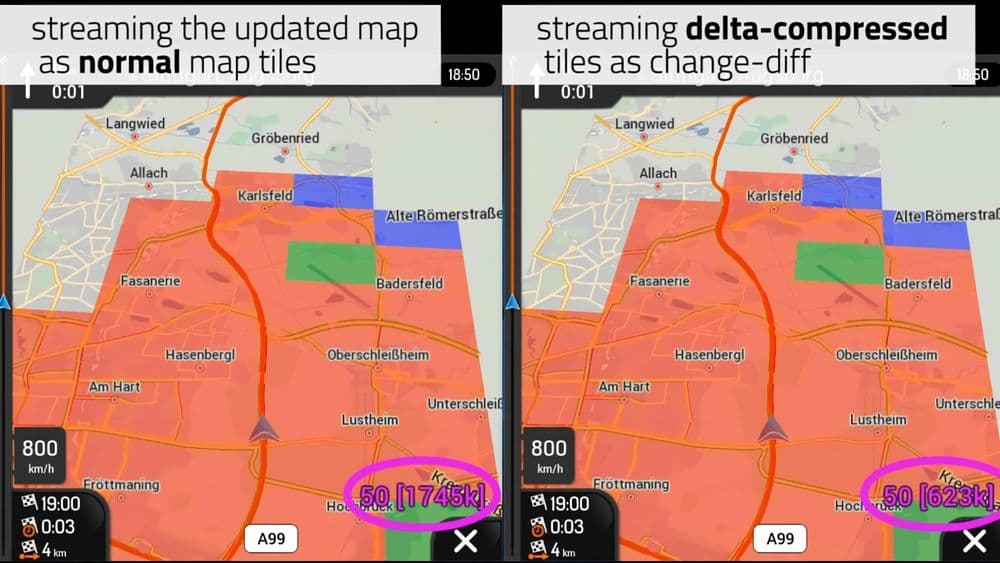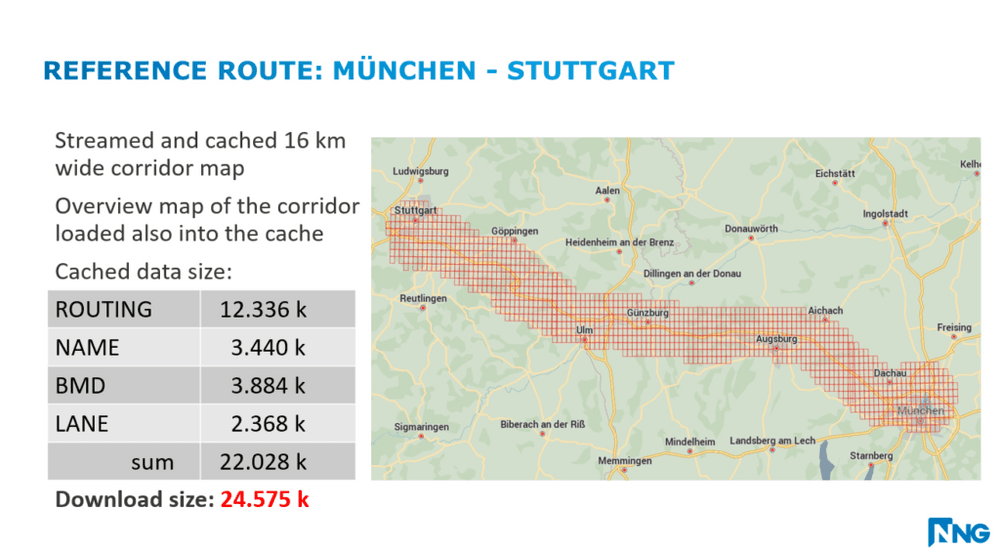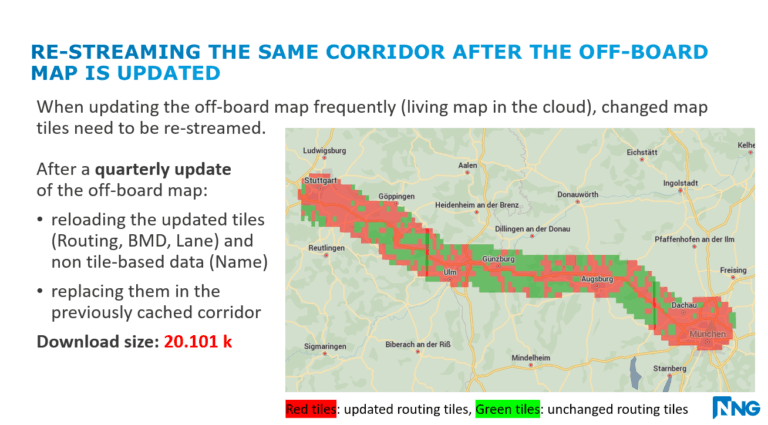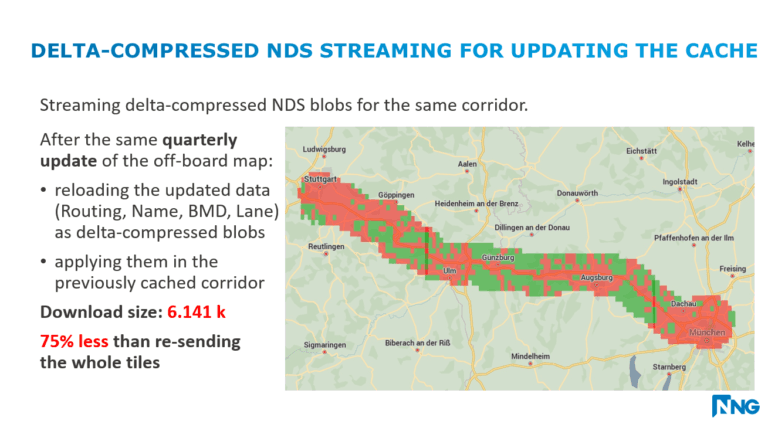Theme

Industry trends
5 min
Low-Cost Data Streaming for Cloud Navigation, with NDS Delta-Compression
Otto Nyiro, NDS Product Guru at NNG, presents a novel, low-cost data streaming technique that reduces cellular data usage in cloud navigation.
NNG
07 Aug, 2019
There is no doubt about it, the smartphone-driven user-expectations of the average consumer mean that map streaming (and the data connectivity needed to support it) is here to stay. What remains to be seen is how OEMs will overcome the associated data costs. Data is not cheap, and the automotive industry is notoriously cost-sensitive. The just-on-time logistical model, and the competitive trends shrinking profit margins mean that OEMs are going to have to get creative if they are to address this consumer demand.
Watch more about NDS-Delta Compression:

NNG - NDS Delta Streaming
3:22
Cloud navigation solutions utilize a vehicle’s cellular connection to deliver the navigation experience. To support this, NNG has developed an NDS-based map streaming solution. This concept even supports full cloud navigation solutions. A lack of pre-installed maps available onboard is no longer a limitation. Required map data can be streamed and cached on-the-fly.
Compressing Costs
The navigation data standard (NDS) map data format offers the unique ability to select independent tiles and layers of the map and stream them on demand – as we saw in the NNG’s prior map streaming demonstration.
Cloud navigation utilizes the vehicle’s cellular connection to deliver the navigation experience. Streaming NDS maps on-demand can reduce the data load significantly. However, when it comes to a living map in the cloud, re-streaming frequent map changes may require an annual cellular data plan that is, unfortunately, way beyond what most OEMs can realistically incorporate into a production vehicle. So how do we reduce the data costs to acceptable levels?
Out of the Delta
Otto Nyiro, NNG’s NDS Product Guru, and the Vice-Chair of the NDS Technical Committee provided an answer. Presenting at the 1st NDS Public Conference in Munich in June, Nyiro explained NNG’s solution to the problem.

With standard NDS tiles, when you stream a corridor, each tile is downloaded into the navigation solutions memory cache. Now, this is already reducing the file size, because you are only downloading relevant tiles (instead of the whole regional map). But the problem lies in when updates are made to the off-board map.

While you may not have to update the full corridor, each tile that has been updated must be downloaded in full. Even if the change to the tile is minor (a single back-road for instance). This leads to a situation where an update of minor changes can lead to an update download size that is almost comparable to the original corridor download.
NNG’s answer to this is to stream only the change (delta) to the tile itself, in what is called Delta-Compressed NDS streaming.
Blobs and Fossils
The starting assumption is that streaming updated tiles isn’t optimal for cellular data consumption – because usually only some attributes are changed inside the tiles. Having already pioneered a unique version of incremental updates for NDS, NNG considered whether it might be possible to use this methodology for individual elements within a tile.
They started by creating a tile diff for each separate tile or blob (in the case of routing aux tables). SQLite recently introduced the Fossil create/apply function, which can be used for this purpose. With this in place, tile and blob deltas (changes) are created automatically after the incremental update of the off-board map.

With this data, the map manager can decide whether full tile data or delta-compressed tiles and blobs need to be requested for streaming. Delta-compressed NDS tiles and blobs can be applied on the fly in the cache database.
Cost Reduction
Applying delta-compressed NDS blobs to the already cached tiles, on-the-fly, indicates no slowdown in map streaming performance. The update cache in both the standard update and the delta compressed update are binary identical.
Using this method can reduce the download size by up to 75%, with no difference in quality. For those OEMs looking to introduce cloud navigation and map streaming to their infotainment, NNG’s solution to the cellular data consumption conundrum is one worth adding to their road maps.
If you would like to find out more about NNG’s NDS solutions, you can contact us here.
Would you like to know more?
Get in touch to learn more about our latest products and services or company news


